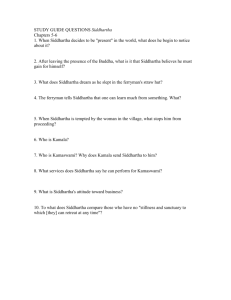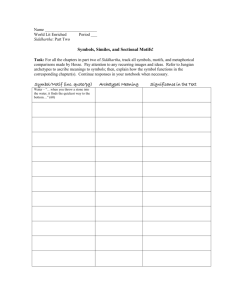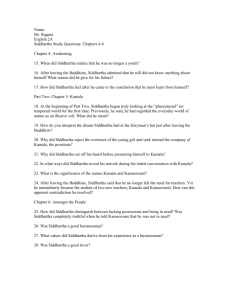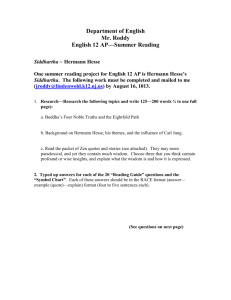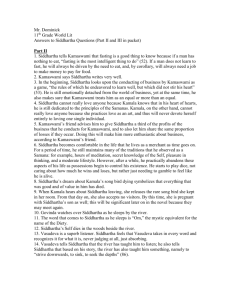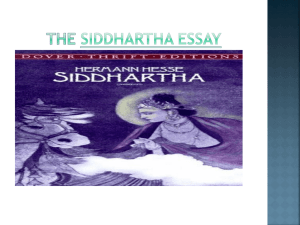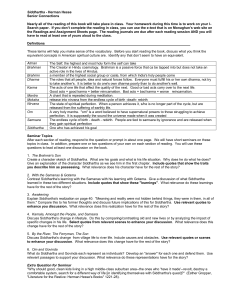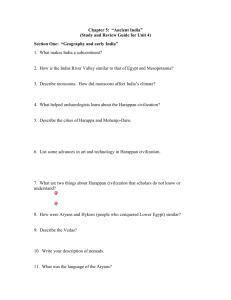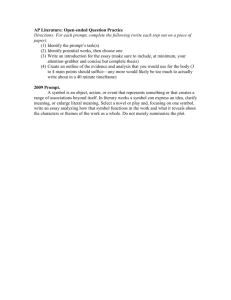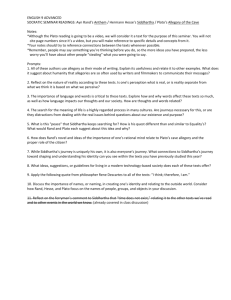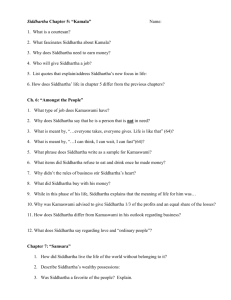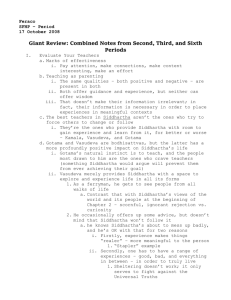English II Name Catalfano Date ____ / ____ / ____ Hermann
advertisement
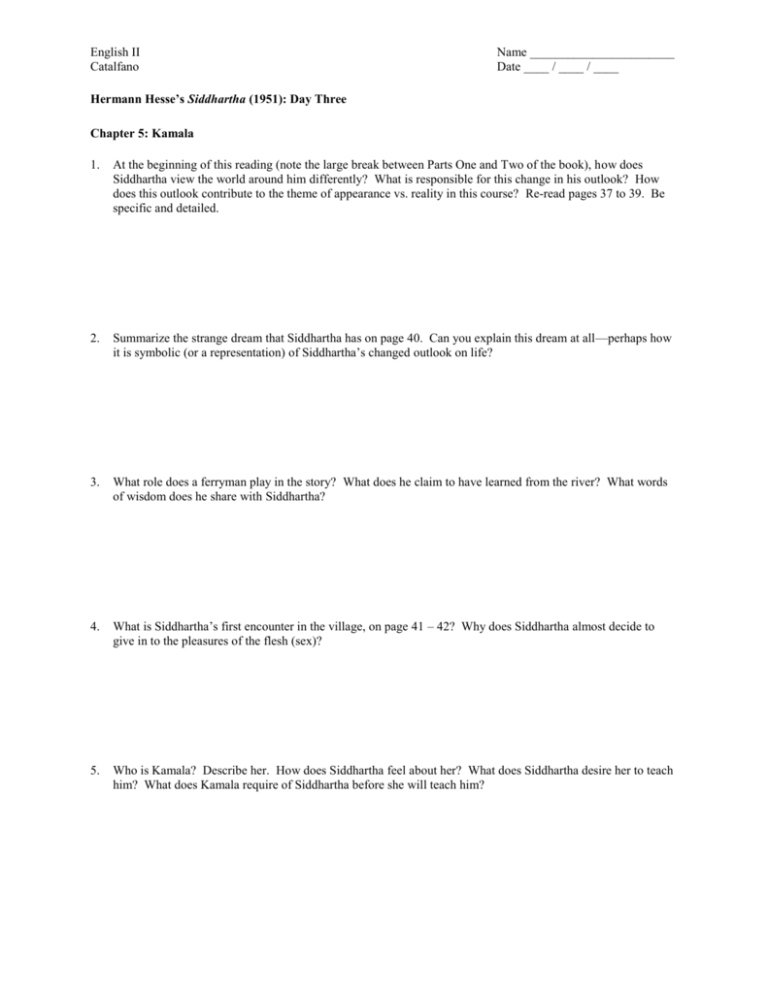
English II Catalfano Name _______________________ Date ____ / ____ / ____ Hermann Hesse’s Siddhartha (1951): Day Three Chapter 5: Kamala 1. At the beginning of this reading (note the large break between Parts One and Two of the book), how does Siddhartha view the world around him differently? What is responsible for this change in his outlook? How does this outlook contribute to the theme of appearance vs. reality in this course? Re-read pages 37 to 39. Be specific and detailed. 2. Summarize the strange dream that Siddhartha has on page 40. Can you explain this dream at all—perhaps how it is symbolic (or a representation) of Siddhartha’s changed outlook on life? 3. What role does a ferryman play in the story? What does he claim to have learned from the river? What words of wisdom does he share with Siddhartha? 4. What is Siddhartha’s first encounter in the village, on page 41 – 42? Why does Siddhartha almost decide to give in to the pleasures of the flesh (sex)? 5. Who is Kamala? Describe her. How does Siddhartha feel about her? What does Siddhartha desire her to teach him? What does Kamala require of Siddhartha before she will teach him? 6. How does Siddhartha feel about his new life in the town (see page 49)? Is he happy? Why or why not? 7. Explain the stone and water metaphor on page 50. Chapter 6: Amongst the People 8. Who is Kamaswami? Describe him. What does Siddhartha learn from him? Why is he an essential part of the story? How does Siddhartha feel about Kamaswami and his work? 9. Why does Kamaswami criticize and become impatient with Siddhartha? How does Siddhartha respond (55 – 56)? 10. In what ways have Siddhartha’s life and opinions changed since the beginning of the story? Do you understand why Part One of the Siddhartha story is very different from Part Two? Explain. How does Siddhartha change his feelings about being “Amongst the People” in this town? Pay attention to pages 57 and 58. 11. Explain Siddhartha’s two similes on the bottom of page 58 (about the different types of people). Also, closely related to these similes, explain Siddhartha’s thoughts on love at the end of the chapter (page 59). When you are finished with the above questions, please return to the “big ideas” (such as knowledge vs. wisdom) from the first worksheet. Add some details to your understanding of each of these ideas from these chapters.
